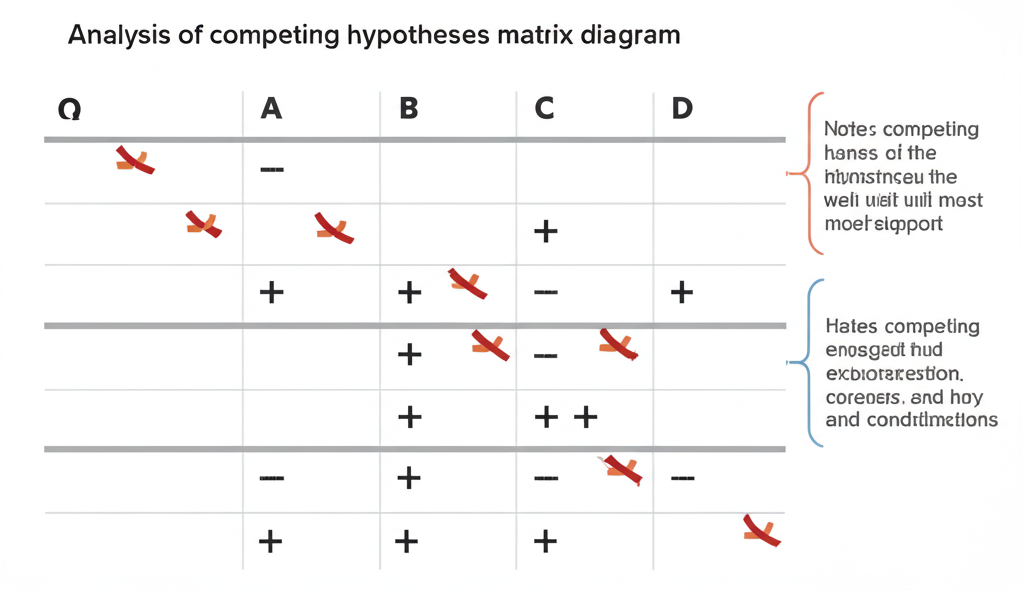Analysis of Competing Hypotheses
Or: How to Prove Yourself Wrong in the Most Structured Way Possible

What is ACH? (Besides a Sound You Make When Realizing You've Been Wrong All Along)
Analysis of Competing Hypotheses (ACH) is a structured analytical technique that helps intelligence analysts avoid the cognitive trap of falling in love with their first hypothesis—a relationship that, like many first loves, is often doomed to heartbreak and embarrassment.
Developed by Richards Heuer at the CIA, ACH is essentially a methodical way of playing devil's advocate with yourself before someone else does it for you in front of your entire team.
The ACH Analyst's Motto
"I'm not just here to prove myself right; I'm here to prove myself wrong in the most elaborate way possible."
The ACH Process: A Step-by-Step Guide to Structured Self-Doubt
- Identify possible hypotheses - Come up with all the possible explanations, including the ones that make you think, "Well, that's ridiculous, but I guess I should include it."
- List evidence and arguments - Gather all the evidence, including that one piece you've been conveniently ignoring because it doesn't fit your favorite theory.
- Create a matrix - Build a spreadsheet that will haunt your dreams, with hypotheses across the top and evidence down the side.
- Analyze how evidence relates to each hypothesis - For each piece of evidence, ask: "Does this prove my hypothesis wrong?" (Spoiler alert: it often does.)
- Draw tentative conclusions - Figure out which hypothesis has survived your brutal assault of evidence. It's rarely the one you started with, much to your ego's dismay.
- Analyze sensitivity - Ask yourself: "What if that crucial piece of evidence turns out to be from a source who also believes the Earth is flat?"
- Report conclusions - Explain your findings in a way that doesn't reveal how attached you were to your original, now-disproven theory.
Why ACH Works (When You Actually Follow It)
ACH forces analysts to consider alternative explanations rather than just gathering evidence to support their initial hunch—a cognitive bias known as "confirmation bias" or, in technical terms, "only seeing what you want to see."
By focusing on disproving hypotheses rather than proving them, ACH helps analysts avoid the trap of becoming emotionally attached to their favorite theory—a relationship that should have ended several pieces of contradictory evidence ago.
ACH Reality Check
Remember: In the intelligence world, being wrong loudly and confidently isn't just embarrassing—it can lead to real-world consequences. ACH helps you be wrong in private first, so you can be right when it counts.
Common ACH Pitfalls (That You'll Probably Fall Into Anyway)
- The "I'll Just Do This In My Head" Trap - No, you won't. Your brain is lazy and will take shortcuts. Use the matrix.
- The "My Favorite Hypothesis Is Still Right" Delusion - If your original hypothesis survives intact after ACH, you probably did it wrong.
- The "I Don't Have Time For This" Excuse - You also don't have time to explain to your boss why you missed a critical alternative explanation.
- The "I've Added Too Many Hypotheses" Spiral - Yes, alien intervention is technically a hypothesis, but let's keep it reasonable.